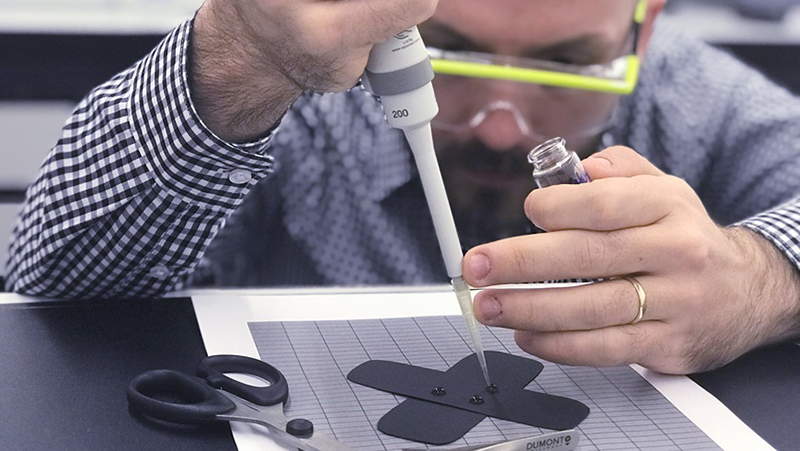Researchers at the Swiss Federal Laboratories for Materials Science and Technology (Empa) are currently working on integrating therapeutic drugs into polymer fibers that can release them into the skin as needed. The smart fibers are able to recognize the need for therapy all by themselves and dose the active ingredients with great precision. The researchers believe in the future, this technology could be used to administer pain medication as soon as an injury occurs during sports, or release an antibiotic as soon as a wound form on the skin.
Related This Smart Bandage Can Monitor Wounds and Deliver Drugs As Needed
“The targeted use of the fiber determines which manufacturing process is best,” explains Empa researcher and project coordinator René Rossi.
“The properties of these new materials are currently being investigated with test substances,” she added.
To make the fibers, researchers are using biodegradable polymers and making them release the drugs that are embedded within them in a controlled manner.
To ensure that the active ingredients dosage is precise, the researchers devised a tricky control mechanism; as some polymers are degradable by the body under certain conditions, they could use this property specifically. “In response to a stimulus from the body, the fibers should release their drugs into the environment at a calculated degradation rate,” Rossi explains.
Such an irritation can be the result of altered pH value of a skin wound, and indicate that the tissue damage must be treated. As a so-called self-care material, the fibers in the form of a garment of plaster thus support the diagnosis and treatment of diseases, reports Empa.
Rossi said that self-care fibers could be used in numerous applications. Besides relying on chemical signals from the body, stimuli could be used from the outside to control medication release by the fibers. It could be used on textiles or dressings that release medication under slight pressure or a stimulus of light can help improve the quality of life of patients and at the same time relieve the burden on health care staff.
The technology can also be used for preventative measures. For example, when active substances are released, these substances can penetrate the fiber in the opposite direction as well. “Thus, the fibers can act as sensors and, for instance, measure the sugar level in the blood,” explains Rossi. In premature babies, the sugar level is especially likely to be out of balance. Using these types of sensors, doctors can monitor blood sugar painlessly through the tender skin without the need for finger pricking the babies.
Related MIT Engineers Create Pressure-Responsive Smart Fibers That Change Color to Show Bandage Pressure
For the CCMX project, the Empa research team along with the École polytechnique fédérale de Lausanne, a research institute and university in Lausanne, Switzerland, are conducting joint research to further develop the smart fibers until 2020.













